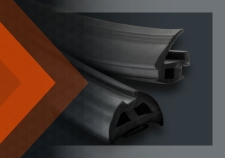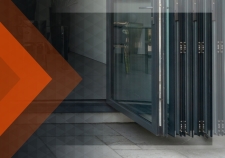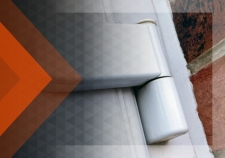
Whether you are primarily involved in UPVC repair, ironmongery, a master locksmith, CCTV installation, or even a door fabricator, it is likely that they are seeing an ever-increasing demand for Access Control, and electronic security in general. This may mean coming across faulty electric releases on communal entrances, being asked to install keypads in office buildings, or perhaps being asked by a homeowner to recommend and install smart home products to their home.
You may already be confident and experienced with the installation and repair of Access Control products, or you may not be, but you will likely be encountering electronic security products more frequently as they become more popular.
In this article, We break down the 3 main types of access control systems, and within each of these systems, every component part can be described as belonging to one of 7 main product categories. This simplified way of looking at it helps to ensure that when we discuss Access Control with you, we both understand your requirements whatever your experience level.
In this blog we will outline:
- A brief introduction to Access Control in general, and why it is an increasingly important part of what we do.
- The 3 Access Control System types, the 7 product categories, and what they all mean.
What is Access Control?
Broadly speaking Access Control means just that, controlling the access that a person has to a defined area (the Secured Area) using a wide variety of electronic security methods to identify who that person is. These methods may include a code, proximity cards, tokens or fobs, or even a fingerprint, etc. These methods are referred to as Credentials. Credentials are one of the 7 product categories we mentioned earlier and will be discussed later in more detail. Historically with traditional security products, the credential has most often been an old-fashioned key, but modern access control credentials can offer many more benefits.
The main benefit of Access Control over traditional keyed security is its versatility. Access Control can be re-programmed, managed, and integrated into other systems such as fire alarms, etc. These advantages can eliminate the costs of key duplication and the cost of replacing locks when keys have been compromised. Additionally, Access Control allows the use of software to interrogate a system to extract information, such as when a door was last opened, who opened it, or if somebody tried to open it but was denied access for example. To summarise, Access Control offers a significant advantage in terms of adaptability, functionality, and long-term management costs.
As the technology evolves and becomes more and more cost-effective, the use of credentials over keys to control access has become commonplace.
So what does a typical Access Control system consist of?
An Access Control System will always consist of the following 7 components in some form or another:
- 1. The User Interface (The bit the user interacts with)
- 2. The Door Controller (The intelligent part of the system that makes decisions)
- 3. The Locking Device (The part that physically secures the door)
- 4. The Request to Exit Device (The way in which a user asks to leave the ‘secured area’)
- 5. The Emergency Exit Device (Used to exit the secured area in an emergency only - may be excluded if it is not necessary for the application)
- 6. The Power Supply Unit or P.S.U. (As it sounds this part just provides the power used by all the other electrical parts of the system)
- 7. The Credential (As we mentioned earlier this is simply what the user presents to the system to identify themselves instead of a traditional key)
It is also important to understand that within access control itself, there are 3 main types of typical Access Control System. All 3 system types will be made up of the same 7 components listed above, but it is the way in which the components of the system are laid out around the building (or ‘Secured Area’) that defines the type of Access Control System being used.
We call these 3 types:
Offline systems:
1. Self-Contained Offline Access Control Systems (A simple Access Control system usually found on single doors where the Door Controller is contained within the User Interface)
2. Split Offline Access Control Systems (A more secure offline system where the User Interface and Door Controller are separate from each other enabling the door controller to be positioned inside the secured area)
Online or ‘Networked’ systems:
3. Online Access Control Systems (A secure system with a dedicated separate door controller like type 2, only this time the door controller can also be connected to a network such as an internet or a local area network)
Each of these Access Control Systems typically contains 7 main components. Let's show you what each of those 7 main components are and where they fit into a typical Access Control System.
Take this basic room below. The Green items are usually found inside the building (or Secured Area) and the Black items will most commonly be on the Outside of the building (or Non-Secured Area).

Item 1. The User Interface
This is the part of an Access Control System that the user will interact with. It is often the most visible and most obvious component, usually on the outside of the secured area clearly visible. User Interface types include the following; Keypads, proximity readers, swipe card readers, fingerprint readers, retina scanners, keyboards, and voice recognition microphones.
The interface only does one job, and that is to receive the information on The Credential presented to it. The interface does not make any decisions itself. It simply receives the information from the user's credential and sends this information to the next component. Item 2 - The Door Controller.
Item 2. The Door Controller
This part of an Access Control System can be described as its brain. It is capable of making decisions. Once The User Interface (reader etc) has sent through the information from the user's Credential (card etc) the door controller will decide what to do with it. It may choose to grant access, or it may choose to deny access. Door controllers make this decision based on the way they have been programmed by an administrator. An Administrator is the person or person’s who are responsible for maintaining the Access Control System. They add users, delete users, and set access permissions.
The door controller may be located on either side of the door, however, due to its vulnerability to manipulation and attack, it is far better for security if it is located inside the secured area. Once the door controller has made the decision to grant access to the secured area, it will send this message along the line to Item 3 - The Locking Device.
Item 3. The Locking Device.
The Locking Device is the component that physically prevents the door from being opened. Common forms of locking device include Electronic Releases (or electric strikes, sometimes called electric latches), Electromagnetic locks (Mag Locks), Electronic Lock Cases (such as Cisa nightlatches and Abloy locks), electronic Multipoint door locks (such as the Winkhaus AV2) and Solenoid Bolts.
Although these products are all very different, they all serve the same general purpose. They physically prevent the door from being opened, unless they are told to release the door by the Door Controller. They cannot think for themselves and require instructions from the controller to operate.
Item 4. A Request to Exit Device (RTE).
The request to exit device is fitted to the inside of the secured area, to dis-arm the locking device and exit the area. This will usually be a switch, or a button, but can also be a push dome, or a push pad. In hygiene sensitive areas e.g. hospitals etc, these may even be touchless sensors, but they all do the same thing. They usually communicate with the door controller and the door controller will intern pass the message to the locking device.
Request To Exit devices make a momentary connection. This means that the message they are sending to the locking device is only brief, lasting for as long as the button is pushed or a few seconds longer if a delay is used. This allows enough time for somebody to exit through the door, but after that, the door will be re-secured.
Item 5. An Emergency Exit Device (Break Glass Unit or BGU).
An Emergency Exit Device is often fitted in conjunction with the Request to Exit Device. These emergency exit devices are fitted in public buildings or commercial buildings such as offices and are usually green in colour. In the event of an emergency, where egress is required, the exit device will be activated and the locking device will instantly disarm and the door will be unlocked allowing passage. The most common forms are break glass units (similar to fire alarm call points) and resettable emergency pushes.
Emergency Exit Devices make a maintained connection. This means the message they are sending to the locking device will not stop until it is manually reset by the administrator. As a result, once activated the door will be made unsecure and will remain unlocked until reset. This is to ensure safe exit of the secured area in an emergency.
*(Sometimes Items 4 and 5 are joined together to create a single component which features both products. These are called Combined RTE and Break Glass)
Item 6. The Power Supply Unit (PSU)
This component is the one which is required to make everything work, the power supply. The idea of the power supply is very simple, to regulate the electricity supply to the system, making sure it has the correct pressure (voltage) and enough power (Amps) available to load all of the other components we have mentioned (Items 1 – 5) run on electricity, however, they are small components with delicate electronics. Because of this, they cannot handle the high pressure of 230V mains electricity they will require a much lower pressure of electricity to be supplied.
Most Access Control systems will run on a 12V DC power supply. The PSU is therefore responsible for converting the 230V AC power that comes out of the mains electricity supply, into 12V DC which can be used by the system.
Item 7. The Credential.
This is the part that identifies the user to the system and takes the place of the traditional key you use with a standard lock. This may not be a physical product, it could be a password or a fingerprint but it is always important to consider as often the preferred credential the end user wishes the system to use will be one of the first things to establish when suggesting suitable systems for the job.
The 3 Types Of Access Control System
Self-Contained Offline Access Control
This is the most basic form of Access Control System. The two main components of the system (The User Interface and The Door Controller) are packed into one product. This means that all the reading of Credentials and all the thinking are done in the same place. This saves costs and makes installation easier with fewer parts, but ultimately has a few serious disadvantages.
Firstly there is usually only limited functionality with these sorts of systems, to keep everything small enough to be contained within the reader, there is not enough space to include much more than basic internal parts. More importantly, security may be compromised on self-contained systems as the Door Controller (the bit that does all the thinking) is on the outside of the door in the non-secured area so can be vulnerable to manipulation or attack. Due to these limitations self-contained access control solutions are predominantly used in applications requiring a lower level of security, fewer users, and 2 doors or less.
Split Offline Access Control Systems
Split Offline Access Control Systems refer to those which have two separate parts for the two main components of access control, the User Interface and the Door Controller. These two components are installed in different locations. The User interface is obviously mounted on the outside of the Secured Area so that the user can access it, however, the door controller, which does the thinking, is installed on the secured side of the door within the secured area. This is much more secure as the User Interface itself cannot usually be manipulated or attacked to gain access as only the door controller can send the information to the locking device, and the door controller is not accessible to attack.
Of course, something that both the above system types have in common is that they are both offline. This means the decisions made by the Door Controller are influenced by programming the door controller directly. This means user credentials be must be enrolled and maintained at the Door Controller. Offline systems are usually only suitable for smaller-scale projects and a few doors.
Online Access Control Systems
In an Online Access Control System the decisions made by the door controller are influenced by software on a central computer which is connected to the door controller via a local area network or internet connection. This means the system can be maintained remotely from a central location. This central location may be connected to several door controllers at a time and therefore capable of managing a large system. The scalable nature of Online systems means they may be suitable for many thousands of doors, and users across multiple sites anywhere in the world. Below is how the example we looked at above may look if it was an online system:

In the above diagram, you'll see that the Door Controllers are no longer thinking for themselves, but have connected via a Local Area Network to a separate location, Where a PC using software can be used to administrate and program the system. This is Online functionality.
To recap then, An access control system:
- Offers many benefits over a traditional masterkey system including Reduced ongoing costs of key management and duplication, as well as much greater functionality with the whole system becoming dynamic and offering the ability to program and change permissions and settings
- Will be one of three types of system, A self-contained offline system, A Split offline system or a networked or online system.
- Will consist of 7 key components, A user interface, a door controller, a locking device, a request to exit device, an emergency exit device, a power supply, and a type of credential.





